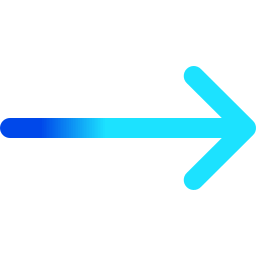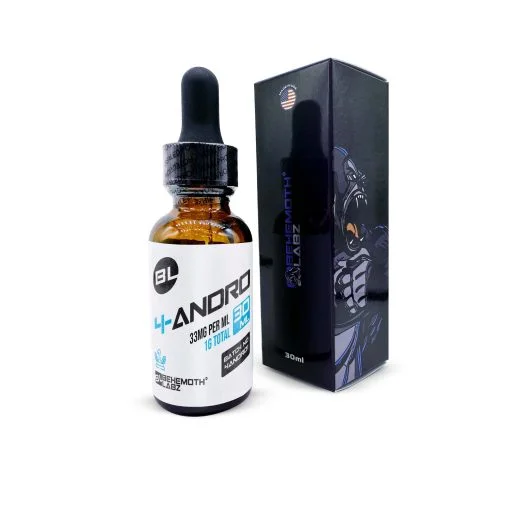Phenibut
Phenibut FAA vs HCL
When it comes to similar compounds with shared benefits, selecting the most suitable one becomes quite challenging. It requires a deep understanding of the benefits and side effects of the compounds. In this context, choosing between Phenibut FAA and Phenibut HCl becomes a challenging task, as both are known to have the potential to benefit research subjects in multiple ways. Therefore, we have thoroughly analyzed these compounds through a comparative analysis, examining them with a critical lens. We have also shed light on the best choice between these two.
For more details, it is recommended to continue reading this blog until the end.
What is Phenibut FAA and HCL?
Phenibut FAA, and HCL are the derivatives of the Phenibut compound. Phenibut FAA (Free amino acid) contains an additional phenyl ring and a free amino acid. The extra phenyl ring is believed to aid Phenibut in crossing the blood-brain barrier and reaching its target site in subjects. On the other hand, Phenibut HCL is the hydrochloride salt form of β-phenyl-γ-aminobutyric acid, making the whole compound water-soluble.
Clinical trials have suggested that they may be used as nootropic and anxiolytic substances in laboratory research. While used as nootropics, they may influence pathways related to cognitive abilities, focus, and attention in test subjects. Whereas when used as anxiolytic substances, they may affect the patterns linked with issues like anxiety, stress, and depression in participants. These potential benefits are caused without leading to significant side effects in the subjects.
How does Phenibut FAA and HCL Work?
As they are the derivatives of Phenibut (β-phenyl-γ-aminobutyric acid), their working mechanism is similar to Phenibut. After being administered to research subjects in laboratory trials, it may directly reach the brain and bind to GABA receptors (Gamma-Aminobutyric acid). After binding, they may mimic the effects of GABA and cause various potential benefits in subjects during laboratory trials.
Some of these benefits are affecting the patterns associated with the nervous system, addressing anxiety and depression, and enhancing cognitive functions in research models during laboratory research. Additionally, the calmed nervous system may also lead to better sleep quality in subjects.
Phenibut FAA vs HCL: Comparative Analysis
The upcoming paragraphs will profoundly discuss the comparative analysis of Phenibut FAA vs HCL.
Mechanism of Action
Both Phenibut FAA and HCL have similar mechanisms of action. They both have the potential to bind with GABA receptors, brain chemicals known for calming the nervous system of test subjects. After this binding, they try to mimic the effects of GABA, which in turn modulates anxiety, stress, and depression.
Potential Benefits
The potential benefits of Phenibut FAA and Phenibut HCL in research subjects are as follows:
- Calming Nervous System: The foremost benefit of Phenibut FAA and HCL is to modulate the pathways related to the disturbed nervous system in subjects. This task may be achieved by inhibiting the production of specific neurotransmitters. Additionally, they bind to or act on GABA receptors, potentially enhancing chloride ion flow to neurotransmitters and thereby reducing their activity. As a result, they attempt to relax and calm the subjects’ nervous systems.
- Treating Stress, Anxiety, and Depression: Stress, anxiety, and depression are the three disturbed states of mind. Phenibut FAA, and HCL are known to have the potential to modulate stress, anxiety, and depression. These issues may be addressed by acting as GABA receptors in the brain of subjects and increasing GABA’s activity. Enhanced activity of GABA is linked with a relaxed mind and an anxiety-free state.
- Enhancing Focus and Attention: Another potential benefit they may cause in test subjects is enhancing focus and attention. To perform this role, Phenibut HCL and Phenibut both bind with GABA receptors in the subjects’ brains and calm the nervous system. The calm nervous system leads to a relaxed mood. In the presence of a relaxed mood, a subject can fully focus on work with great attention.
- Better Sleep Quality: Better sleep quality is also linked with the benefits of Phenibut FAA, and HCL. For this role, Phenibut FAA and HCL may serve a similar purpose by binding to GABA receptors in research subjects during laboratory trials. The GABA receptors may then relax the mood and nervous system, and remove stress and anxiety. These roles may indirectly affect the sleep patterns of subjects and assist them in achieving better sleep quality of research subjects.
Side Effects
Though they have been shown various potential benefits, they may cause several side effects. These side effects may range from mild to severe. Some of these side effects may be stomach irritation, vomiting, dizziness, fatigue, and nausea in test subjects. These side effects can easily be tackled and addressed with initial treatment.
Before and After Results
Various studies conducted on rats and mice have shown significant changes in the nervous systems. Before using Phenibut, the subjects were facing the issue of a disturbed nervous system. The moment they were administered the dose of Phenibut, their nervous system gradually and slowly calmed down. Additionally, the subjects also witnessed better sleep patterns and the removal of stress and anxiety.
Nature
Phenibut FAA contains a free amino acid with an extra phenyl; whereas, Phenibut HCL contains a hydrochloride salt. The hydrochloride salt makes the compound water-soluble and easy to digest in the stomach of subjects. The presence of HCL also makes it more acidic. On the other hand, Phenibut FAA is more fat-soluble and has a neutral pH.
Which Option is Better?
The best option depends on the choice of researchers, their needs, and objectives. If you are looking for a cost-effective and water-soluble compound, then Phenibut HCL is the recommended option. However, if you are looking for a compound with a fast absorption rate with less acidity, then Phenibut FAA is the best choice. Before selecting any of the compounds, it is advised to write down your needs and objectives, and then select accordingly.
Conclusion
To conclude, both Phenibut FAA and HCL are derivatives of GABA neurotransmitters. They act on the GABA in the brain of subjects and function as neurotransmitter inhibitors. Performing such a role may calm down the nervous system and increase or decrease the levels of certain neurotransmitters. Through such activities, they may treat stress, anxiety, and depression in subjects. Additionally, they may also lead to improved sleep patterns. The best choice depends on the objectives, needs, and requirements of researchers.
Frequently Asked Questions
What is the best place to buy Phenibut FAA online?
The best place to buy Phenibut is BehemothLabz. It is the place where quality meets excellence. A place that prioritizes quality and purity. Our products are third-party tested and can be delivered nationally and internationally.
What is the difference between Phenibut FAA and Phenibut HCL?
Both are derivatives of the Phenibut compound. The Phenibut FAA contains a free amino acid and is more fat-soluble. On the other hand, Phenibut HCL is more acidic as it contains hydrochloride salt and thus is more water-soluble.
Does Phenibut affect dopamine in test subjects?
Yes, studies on subjects show that Phenibut may increase dopamine levels. This level increases when phenibut may potentially bind to GABA receptors, which are neurotransmitter inhibitors.
Is Phenibut similar to baclofen?
Yes, both Phenibut and baclofen are similar in structure and function. Both are GABA agonists, and they mainly act on GABA-B receptors in the brain of subjects. Phenibut contains a phenyl ring, which enables it to cross the blood-brain barrier. On the other side, baclofen contains an extra chlorine atom on the phenyl ring.
References
- Tardner, P. “Phenibut HCL vs FAA.” (2021).
- Tardner, P. “Phenibut HCL: Is This The Superior Phenibut?” (2024).
- Komisarek, D., M. Pallaske, and V. Vasylyeva. “Crystal structure and thermal properties of phenibut, phenibut H2O and phenibut HCl: A case for phase stability based on structural considerations.” Zeitschrift für anorganische und allgemeine Chemie 647.9 (2021): 984-991.











